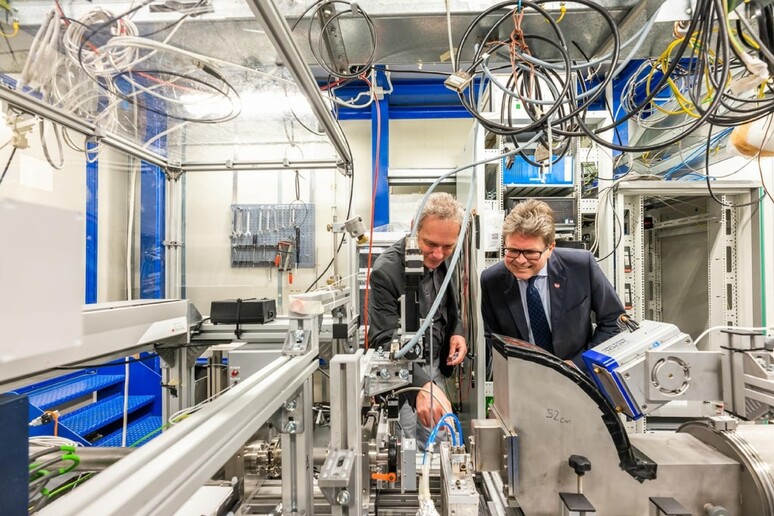Yesterday, a significant event
unfolded as a delegation led by the esteemed Austrian Minister
of Education, Science and Research, Martin Polaschek, visited
the headquarters of the European Consortium for Research
Infrastructures in Central Europe (ERIC) in Trieste. The visit
was a testament to the importance of international research
collaborations, focusing on fruitful partnerships involving
Austria, the Czech Republic, and Italy at Elettra Sincrotrone.
The group - as per a statement - composed of representatives
from the ministry and the Technical University of Graz, had the
privilege of witnessing the cutting-edge research techniques at
the two Austrian synchrotron beam lines at Elettra: SAXS (Small
Angle X-ray Scattering) and DXRL (Deep X-Ray Lithography). These
state-of-the-art techniques, used for research and
characterization of materials at the nanometer level (SAXS) and
for the fabrication of complex microscopic devices (DXRL), are
at the forefront of scientific advancements, inspiring
researchers worldwide.
The statement elucidates that ERIC, founded with a noble vision
of promoting integration in the European research area, is
steadfastly pursuing its mission. With the support of the
Italian government and other participating governments, ERIC
integrates laboratories specializing in materials analysis,
nanotechnology, and nanoscience into a single entity. This
facilitation of joint research and access to Italian and foreign
researchers is a testament to the power of collaboration and
shared purpose in the field of research.
A collaboration, the statement adds, that "is expanding
through strategic partnerships with prestigious institutions
across Europe, which include various universities and
laboratories in Italy (Universities of Salerno, Salento, and
Naples, Fondazione Bruno Kessler, European Commission Joint
Research Centre in Ispra), Croatia (Ruđer Bošković Centre),
Hungary (Budapest Neutron Centre), Poland (Solaris synchrotron),
Slovenia (Slovenian Nmr Centre), and Romania (National Institute
of Materials Physics), with Serbia being observed."
ALL RIGHTS RESERVED © Copyright ANSA





